They lived by the Vistula and the Oder at the beginning of our era. They were mentioned by Roman writers from the 1st and 2nd centuries - Pliny the Elder, Tacitus, Ptolemy Claudius. They wrote that a large number of people lived on the Vistula River, called the Wenedowie. What was the origin of this mysterious tribe? According to Jordanes - a historian from the 6th century CE - The Wends are none other than our ancestors, the Slavs.
In antiquity and the Middle Ages the names Wenedowie (Wenedzi, Wenetowie, Wendowie) were commonly used as a general term for the Slavs. It was so entrenched that in Germany in the 19th century, the words Wenden or Winden simply meant - Slavs. And in Scandinavia, reports about Vends / Slavs appeared very often. The Vendas were mentioned in Scandinavian sagas, and the Vend country was called Vindland.
Wends, inhabitants of… Sarmatia
According to Roman chroniclers and geographers, today's Poland was an area bordered by two barbarian lands. The Barbaricum, east of the Rhine and north of the Danube, was divided into closer Germania and further Sarmatia. The border of these lands was the Vistula River. The chronicler Pliny the Elder reported:"Some say that these lands, up to the Vistula River, are inhabited by Sarmatians, Wends, Sciras, and Hirers."
According to Ptolemy, who created his works in the 2nd century AD, European Sarmation stretched eastward to the Vistula River as far as the Don River. From the north it was limited by the Sarmatian Ocean, or the Baltic Sea , where the Gulf of Venice was located (the Gulf of Gdańsk). Ptolemy wrote:
(…) there are huge peoples in Sarmatia:the Venetians along the Gulf of Venice (Οὐενεδικὸν κόλπον) (…). Among the smaller peoples, they sit in Sarmacja in Gytonowo, near the Wistula River, below the Wends (...). More to the east than those listed below sit the Wends:Galinds, Sudins and Stawans, as far as Alanów.
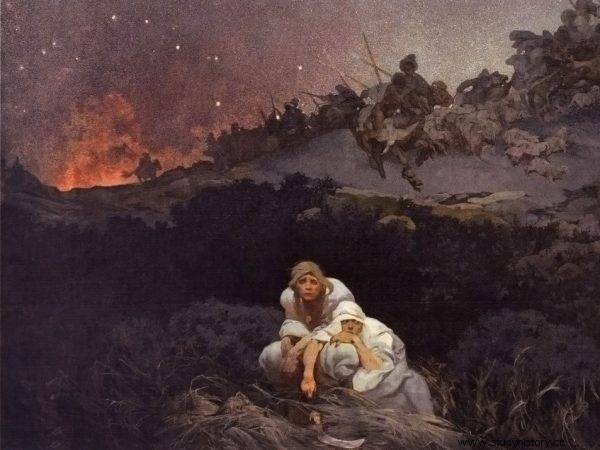
The European Sarmation stretched to the east to the Vistula River as far as the Don River. From the north, it was limited by the Sarmatian Ocean, i.e. the Baltic Sea, where the Gulf of Venice (Gdańsk Bay) was located.
According to the account of Tacitus, the author of the work "Germania", the Weneds had contact with the Sarmatians, but they themselves belonged to a different ethnic group and represented a different culture:"The Venetians adopted many of the customs of the Sarmatians. All the forests and mountains between the Peuchins and the Fenns run for loot. However they should rather be classified as German because they build houses, wear shields and like fast walking tours . This distinguishes them from the Sarmatians who live in carts and horses, "he wrote in the 1st century AD.
Venets =Ants + Sklavins
The Roman chronicler Jordanes, who lived 500 years later, was the first to identify the Venets as Slavs:"And the Venets, (...) coming from a single trunk, appear today under three names:Venets, Antes, and Sclavenes."
According to Jordanes, the Venets lived beyond the Carpathians in "vast expanses from the Vistula River". The Ants were supposed to live in the neighborhood:their land stretched from the Pontic Sea (Black Sea), from Danaster (Dniester) to Danaper (Dnieper). But Jordanes adds that the Venetians "although they now take different names by house and place, they are basically called Sclavens and Antes."
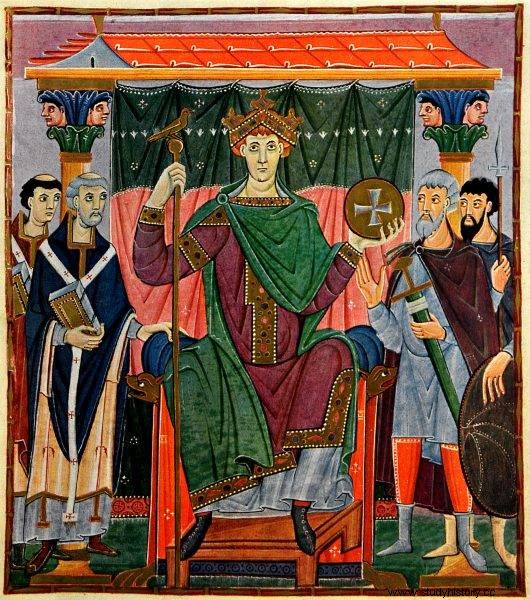
Later, the name Sklavonia became a synonym for the entire Slavic region (this is what Otto III called the lands of Brave).
Scientists identify the people of Antes mentioned by Jordanes with the Eastern Slavs from today's Ukraine / Belarus, while the Sclavens (Sklavins) appear in the chronicles as Slavic invaders of Byzantium, tribes that migrated from the north and gradually conquered the Balkans . Later, the name Sklavonia became a synonym for the entire Slavic region (this is what Otto III called the lands of Brave). Thus, the chronicler Jordanes was the first historian of the turn of antiquity and the early Middle Ages to identify the Venetians / Venets with the Slavs.
Sarmatians from the Vistula River
The problem is that science "knows" nothing about the Sarmatians or the Venetians in Poland. According to the current state of knowledge, the former - people of Iranian origin, descendants of the militant Asian Scythians - occupied for a thousand years huge areas of the forest steppe, from the Black Sea to today's Hungary. It was in fact a conglomerate of different peoples (and often fighting each other), not necessarily ethnically homogeneous, more with a similar model of life and similar cultural elements.
For the first time in the 5th century BC Herodotus mentioned them. From around the 3rd century B.C.E. they lived between the Black Sea and the Don. Around the 1st century C.E. The Sarmatians reached the Danube. They led a nomadic lifestyle, they were famous for their militancy (also women), equestrian skills and armored cavalry (some tribes had it). At the beginning of our era, they took their toll on Rome. Ultimately, however, despite the massive blows inflicted on the empire, they were defeated.
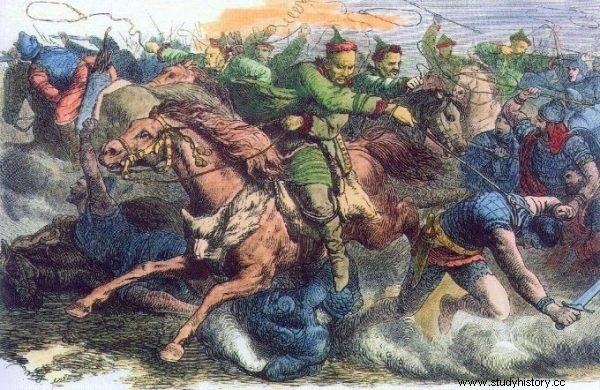
In turn, the tribes inhabited more to the east withdrew from the advancing Huns.
In turn, the tribes inhabiting more to the east withdrew from the advancing Huns. Part of the Sarmatians (Alans), together with the Germanic tribes (Vandals), reached Gaul, and then Spain. The final end of the Sarmatians came at the turn of antiquity and the Middle Ages, when Rome was conquered by the warlike Huns.
What does Poland have to do with the Sarmatians? Nothing on the scientific ground. The legendary Sarmatian origin was attributed to the Polish nobility. For today, however, the scientific status quo neither sees the grain of truth in a noble's tale nor does it recognize that the Sarmatians played a significant role in the ethnic changes in the Odra and Vistula basins.
Oversized Sarmation?
So where did ancient historians place Sarmatia on the Vistula? Researchers believe that chroniclers who indicated Vistula in the west and the Baltic in the north as the boundaries of the Sarmatian land, they made a gross generalization, without knowing the real ethnic composition of these lands.
Antiquity geographers and historians used conventional names, which they gave on the basis of overheard, imprecise information, often much earlier than the years in which they wrote their books themselves. The concepts of Sarmacja or Germania were not ethnic and geographic. Dr. Wojciech Paszyński in the work “Poland as a Vandal. The vandalism concept in Polish historiography of the Middle Ages ”writes:
The term Sarmatia was part of the geographic Roman nomenclature. It had its source in the contractual division of the lands of Barbaricum, located north of the borders of the Empire, into Germania and Sarmatia. In the Middle Ages, reference was made to this symbolic division, which was preserved in early modern literature; mainly historiography (chronicle) and cartography.
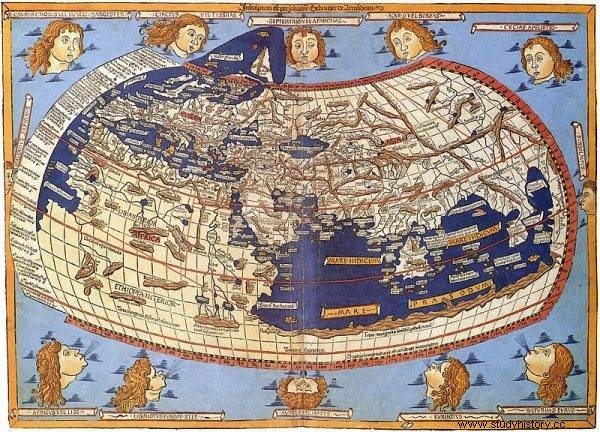
photo:Lord Nicolas the German / public domain Map of Johannes Schnitzer from 1482 according to Claudius Ptolemy, visible territory defined as Sarmatia Europe
So, has the noble legend of Sarmatian origin been completely sucked out of the finger? There are many premises that prove that it is not entirely.
Archaeologist Tadeusz Sulimirski, the author of the work "Sarmaci", pointed not only to the great similarity of the Sarmatian tamgas (signs) to Polish knightly coats of arms, but also to some names of places in Poland, which, in his opinion, come from the Sarmatian language:Chotum near Ciechanów, Chotynia near Garwolina, Choceń near Włocławek, Chotynin near Wieluń, Chotyniec near Jarosław (where, incidentally, a few years ago traces of the Scythian settlement - relatives of the Sarmatians were found).
Researchers (including Prof. Aleksander Gieysztor) also point to the Iranian origin of many words, still functioning in Polish and other Slavic languages - incl. concepts related to religious matters such as:God, wealth, poverty, fame, heaven, faith, sacrifice.
Wends, or Slavs
The Weneds - as Tacit wrote - took over many customs from the Sarmatians, although they were a different people. According to Jordanes, the Weneds are Slavs. If it is recognized that both he and Tacitus wrote about the same Wends, it means automatically sending the allochthonous theory of the origin of the Slavs to the dustbin, which is still valid today. scientific concepts.
According to allochtonists, the Slavs came to the Vistula from the east only around the 5th century AD. They migrated to areas that had previously left the Germanic tribes (the so-called settlement emptiness). However, if the Wends, about whom ancient chroniclers wrote, are Slavs, it means that our ancestors did not come from nowhere, but were on the Vistula "since always", or at least much, much earlier than the allochthonous theory assumes.
The Vends, or… Teutons
Unless there was a mistake in historians again - ancient chroniclers from the beginning of our era wrote about other Wends, and the others were meant by Jordanes, who wrote several centuries after them. The former could be Germanic tribes that lived in our part of the world until the 3rd-4th century AD.
The Vandals - later raiders of Rome - set out on their journey westwards from today's Poland, which in turn they arrived from Scandinavia around the 3rd century BC. It is believed that "with us" they lived in the central and southern part of the country. They are identified with the Przeworsk archaeological culture. The Vandals in the 4th century AD united with the Sarmatian Alans and migrated west.
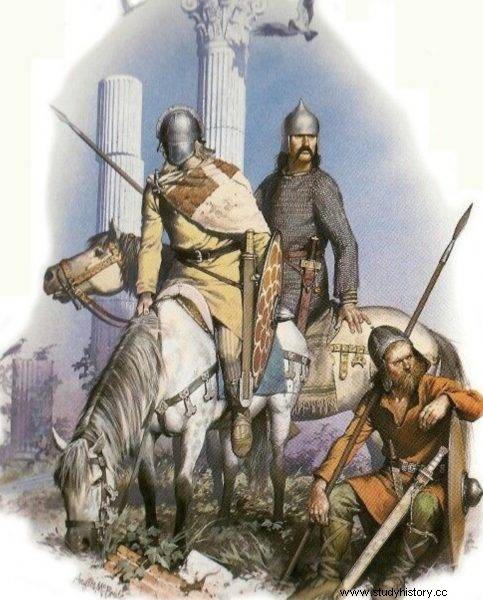
Germanic Goths also lived on the Vistula.
Germanic Goths also lived on the Vistula. Those identified with the Wielbark culture in the first centuries of our era, after arriving from Scandinavia, settled in Pomerania and gradually headed south along the Vistula in search of fertile lands. According to some researchers, the Goths' journey towards the Black Sea was not a conquest. While moving, they inhabited only voids, accepting the ownership of the natives.
Was it the Goths that the chroniclers had in mind when writing about the Venets? The fact that they started their expansion from Pomerania, in the Gulf of Gdańsk region. In antiquity it was called the Gulf of Venetian, and here the Venetian seat was located (Ptolemy). Perhaps the chronicler Jordanes took the name of the people from ancient historians, while the ethnic composition of the lands on the Vistula had already changed. In short, after the "proper" Wends had migrated, only the name remained after them, which was then assigned by Jordanes to the visitors from the east, i.e. to the Slavs.
Such a scenario, while possible, seems unlikely. Jordanes himself was of Gothic origin, he wrote the work "Getica", which is an abbreviated "History of the Goths" of Cassiodorus, stretching from the legendary origins of this people to the mid-6th century CE. He seems to be a well-informed author, yet he mentions Slavic Wends, Sklavins and Ants in addition to the Goths.
The Venetians of Biskupin
There are several more hypotheses regarding the ethnicity of the mysterious Wends. Some researchers equate them with the Vandals. Others see them as an Illyrian people. Originating from the Illyrian group, the Venetian tribe lived in northern Italy from the 10th century BCE. According to Herodotus, they came to Italy from the east. Were they the "tenants" in the Polish lands in ancient times? Perhaps some of them remained on the Vistula or, after migrating to the south, the very name that was assigned to other peoples remained after them.
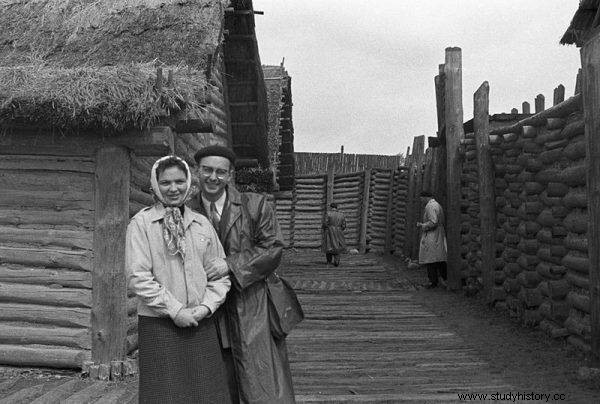
This is how he saw the past of our lands, among others archaeologist Józef Kostrzewski - one of the leading representatives of autochthonism. He believed that the ancestors of the Slavs lived here "forever", the Proto-Slavic was - spreading over a huge area of our country - Lusatian culture, the product of which was the Biskupin castle.
Finally, there is also a hypothesis confirming Jordanes's account, which says that the Wends living in today's area of our country were Proto-Slavs . This is how he saw the past of our lands, among others archaeologist Józef Kostrzewski - one of the leading representatives of autochthonism. He believed that the ancestors of the Slavs lived here "forever", the Proto-Slavic was - spreading over a huge area of our country - Lusatian culture, the product of which was the Biskupin castle.
We know we know nothing
The thicket of speculation clearly shows the actual state of knowledge about the ethnogenesis of the Slavs and the ethnic composition of the peoples inhabiting our lands. As of today, no theory can be considered dominant. Hypotheses until recently considered heresy - such as the influence of the Sarmatian tribes on the Slavs, are gaining more and more strength. Some researchers believe that the Slavic Antes tribe could have been slaved Sarmatians (some identify them with the Sarmatian Alans) or the Slavs, who assumed domination, protection, and thus the leadership of the Sarmatians (this is what Sulimirski thought, among others).
Everything indicates that the allochthonous theory dominating in recent decades about the origin of the Slavs from the east and their arrival here only in the 5th century CE requires at least a significant modification, if not completely modified.
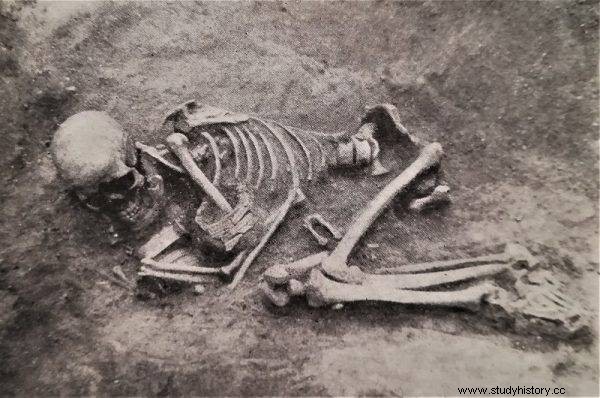
People with the same biological and genetic characteristics lived in our part of the world from prehistory (Lusatian culture, but also later - Wielbark, Przeworsk) to the Middle Ages.
Another premise in this regard is the latest research in the field of exact sciences - genetics and modern anthropology. They do not confirm the thesis about the population exchange on the Vistula, and this was the basis of the allochthonous theory. The picture is exactly the opposite - from the research of professor Janusz Piontek from the University of Adam Mickiewicz in Poznań shows that people with the same biological and genetic characteristics lived in our part of the world from prehistory (Lusatian culture, but also later - Wielbark, Przeworsk) to the Middle Ages. At the same time, specific biological features distinguish these remains from the bodies of people from groups considered to be Germanic from the area of Germany, and from the remains of the Eastern Slavs.
In the study "The population of the Lusatian culture and Pomeranian culture and the problem of the origin of the Slavs" by Janusz Piontek and Beata Iwanek, it was stated:
The results of these studies, including ours, do not support the thesis about the discontinuation of the settlement of areas in the Odra and Vistula basins between antiquity and the early Middle Ages. However, these studies show a high biological similarity between the people living in these lands since ancient times.
It is true that genetic or morphological studies of body remains do not say anything about the culture of peoples living in a given region of the world, and the Slavs are an ethnos whose common feature is culture and language, but they constitute strong evidence against large migrations of people. Research does not confirm such a phenomenon - and thus contradict the allochotniczny theory of the origin of the Slavs. Certainly in recent years, also due to a number of new archaeological discoveries (including the Scythian stronghold in Chotyniec), the image of antiquity and the early Middle Ages in our part of Europe is undergoing a very strong metamorphosis.
Bibliography:
- Lew Gumilow: History of the Great Steppe Ethnos . Krakow:Oficyna Literacka, 1997.
- Lech Leciejewicz: Western Slavs. From the history of the formation of medieval Europe . Wrocław-Warsaw:Ossolineum, 1989.
- Dorota Ławecka: Introduction to archeology , Warsaw:PWN, 2009.
- George Ostrogorski: History of Byzantium . Warsaw:Państwowe Wydawnictwo Naukowe, 2008.
- Wojciech Paszyński: Vandaly. The oldest vision of Poland's prehistory , Sandomierz 2019.
- Janusz Piontek, Beata Iwanek: " The population of the Lusatian culture and Pomeranian culture and the problem of the origin of the Slavs ” , Archaeological Museum in Gdańsk 2009.
- Jerzy Strzelczyk: " From Proto-Slavs to Poles ” , (series:History of the nation and the Polish state) Krakow 1987.
- Benedict Zientara: Ś wit of the European nations. The emergence of national consciousness in the area of post-Carolingian Europe , Warsaw:State Publishing Institute, 1985.
